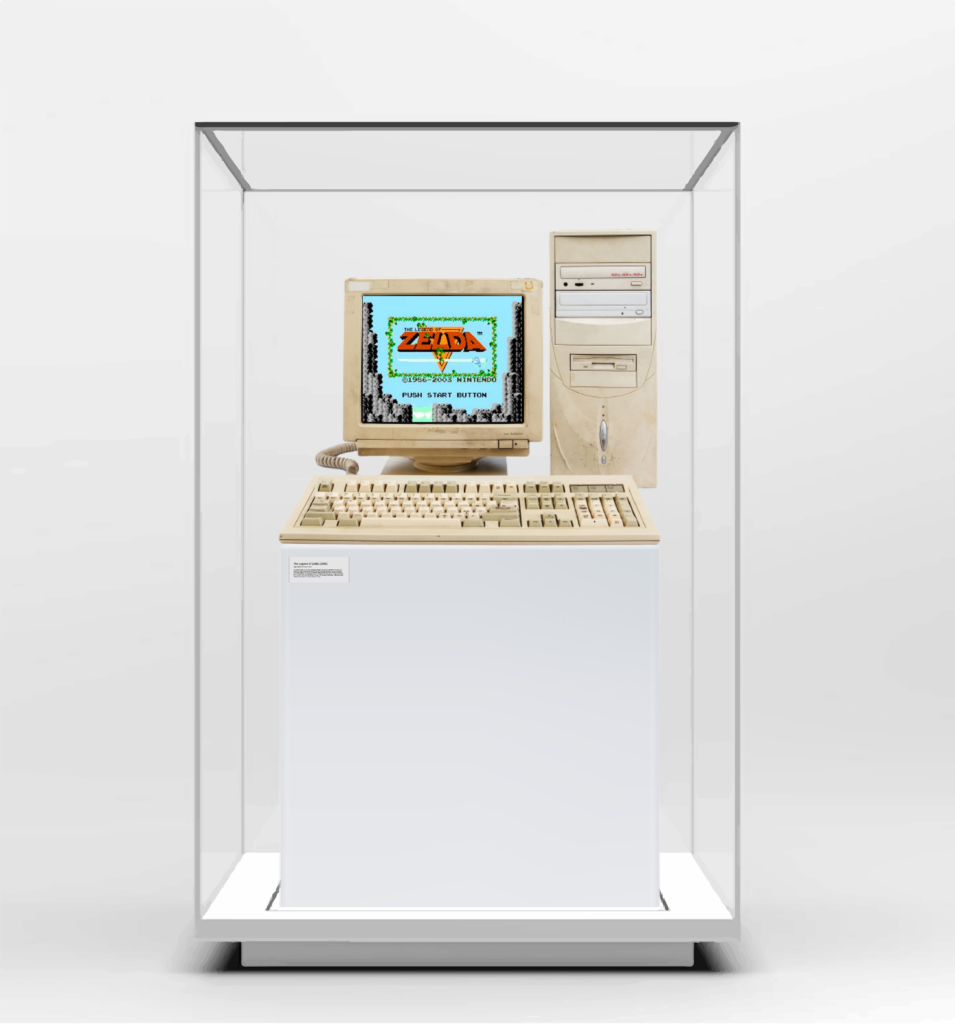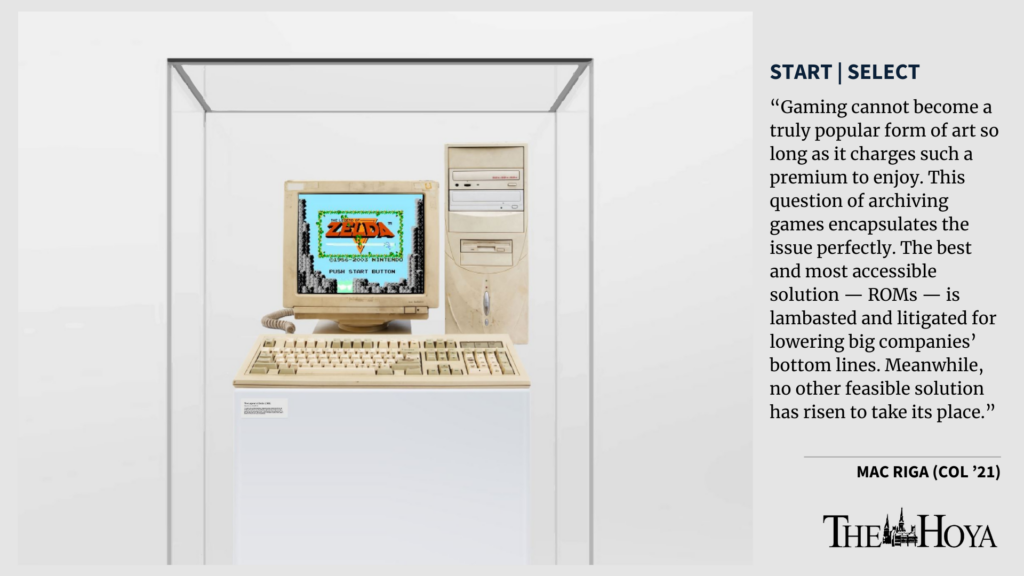When Nintendo announced “The Legend of Zelda: Skyward Sword HD” earlier this year, fans were less than thrilled. Players accused the game of being a cheap cash grab. This slightly upscale remake of a 10-year-old game going for $60 struck many as unreasonable. In a world of remakes and rereleases of video games, players and companies alike are left wondering how designers can best preserve and pass on the games of yesteryear.
The answer is more complicated than one might hope. Perhaps the biggest hurdle to vault is the question of the medium itself. Archiving a piece of visual or audio art is quite easy. These artifacts can be viewed and appreciated by many viewers, often at the same time.
By contrast, video games have a fundamental and fleeting interactive component, making them hard to archive. Current methods of archiving games often come up short in terms of accessibility, longevity or legality, causing the need for alternative methods of preserving these works of art.
Accessibility is also a key issue facing the industry. Gaming cannot become a truly popular form of art so long as it charges such a premium to enjoy. This question of archiving games encapsulates the issue perfectly. The best and most accessible solution — ROMs — is lambasted and litigated for lowering big companies’ bottom lines. Meanwhile, no other feasible solution has risen to take its place.

The issue can be well illustrated by imagining a physical games museum akin to an art museum. With the latter, archival and public consumption is an easily answered question. A painting or statue need only be displayed in a climate-controlled environment and can be instantly enjoyed by large crowds. Not so for games. Displaying physical computers or consoles on which to play games is an option, but it has its limitations.
For one, many games are very lengthy to play in full. They are intended to be enjoyed over the course of weeks or months, so public setups in a museum space couldn’t possibly accommodate such a lengthy playtime. What’s more, having multiple stations to allow for several guests to be playing at the same time quickly accrues great cost and space constraints. In theory, one could record and display someone playing a game, but there is something undeniably lost in the process.
These factors all seem to rule out any current possibility of a comprehensive physical games museum. But luckily, video games have always been a digital medium. Read-only memory files, known as ROMs, are essentially data packs containing the code of a game. Using a type of software called an emulator, you can boot up a ROM and play it on a computer. ROMs can help preserve games that are no longer being manufactured. This versatility is especially helpful for playing games that are rare and expensive to purchase secondhand.
This, at first, may appear to be a perfect solution: ROMs and emulators are easy to produce and distribute. Anyone with access to a computer capable of emulating these files, which most are for older games, has a free, infinite museum of games at their disposal.
The problem, however, is one of legality. ROMs are very rarely licensed by the companies who made the games. This makes sense: someone downloading a free ROM of a game isn’t giving its creator any money. ROM and emulator sites are frequently taken down, especially by litigious developers like Nintendo.
Gamers are then left with no option but to scour Ebay for used copies. This option especially chafes gamers who are, essentially, doing the same thing as before. They obtain a copy of a game through a third party, and the developer does not receive revenue. The only difference is the gamer is being charged a premium. When developers release officially licensed ROMs on their current consoles, an otherwise free and accessible — albeit questionably legal — resource is being put behind a paywall.
As games rise in prominence and gain widespread recognition as works of art, the necessity for a repository of games only becomes clearer. Whether or not developers are cognizant, making a game today necessarily speaks to the history of the medium, because video games are constantly in conversation with one another. Just as individual games are made iteratively, so too are games as a whole.
Old video games are a dying art form. A modern developer of first-person shooter games may not be aware that the WASD movement has its origins in 1981’s “Wizardry,” but their utilization of the control scheme, conscious or not, is a direct legacy of this earlier title. Failure to recognize these often invisible histories is a surefire way to fall prey to mistakes of the past. Gaming’s artistic evolution requires an easily accessible record of legacy for developers and gamers alike.
The problem of saving video games for posterity is not one without solutions, just one choked with red tape. While curators, lawyers, artists and fans try to unravel it, time keeps running out. In order to prevent the erasure of gaming’s history, we, and especially corporations, must find an accessible way to save our games.














